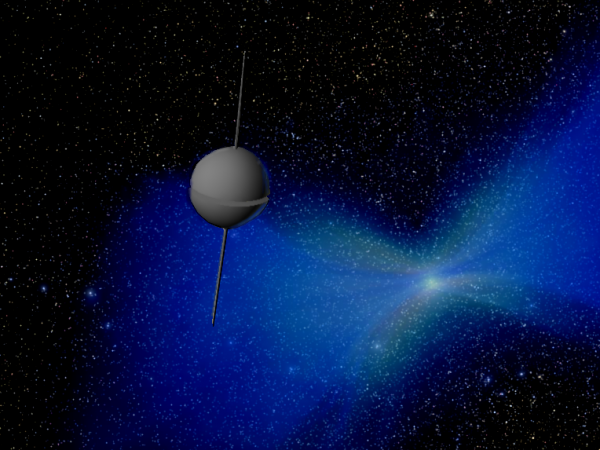BY LETTER
Crashcache
Technology > Application > Augmentics
Technology > Technology Levels > High Tech / Hitech
Technology > Application > Medical Treatment
Technology > Technology Type or Material > Nanotech
Technology > Technology Levels > High Tech / Hitech
Technology > Application > Medical Treatment
Technology > Technology Type or Material > Nanotech
 Image from Steve Bowers | |
| Crashcache lifeboat recovered from deep space near the Boomerang Nebula; this cache contained the recorded memories of thousands of colonists from an interstellar craft destroyed by a catastrophic accident | |
Emergency medical/disaster survival device designed to safely contain the mind-states of multiple numbers (sometimes very large numbers) of sophonts.
A crashcache is usually used in those situations where sophonts either have (or are at risk to have) experienced severely debilitating or potentially fatal injuries without medical repair systems readily available. Rather then risk the loss of life that waiting for such systems to arrive might entail (assuming that such an arrival is even possible at all), the crashcache is used to absorb and store the victim(s) mind-state in a hardened data storage container.
In emergency medical situations caches are normally portable by the average sophont and include:
1. Multiple high-speed data ports designed to accommodate input both from included emergency medical upload nano (usually destructive to save time), and (possibly damaged) Backup implants extracted from victims on the scene.
2. 'Plug-and-play' tissue sampling tools designed to provide a genetic sample in addition to the extracted mind-state to facilitate eventual reconstruction.
3. A hardened outer casing and internal storage compartments designed to accommodate both used sampling tools and extracted Backup implants removed from victims on the scene and needing storage until reconstruction facilities can be made available.
4. Up to several kilograms of high-grade data substrate, usually nanotech based to save weight; ultratech and godtech level substrates use advanced data compression and design factors to reduce cache size still further.
The other primary use for crashcache systems are as hardened mind-state 'lifeboats' or emergency shelters in situations in which danger can appear rapidly and with little or no warning (for obscure reasons, these are often referred to as 'storm cellars'). Most modern spacecraft and virtually all interstellar craft include one or more crashcaches in their structure in the event of a catastrophic accident or system failure. Many of the more advanced shipboard caches include a small, but powerful, propulsion system able to achieve 7-10% of lightspeed.
There are several recorded instances of interstellar vessels being struck by disaster, only to have their passengers and crew show up decades or centuries later, having continued their voyage in the cache.
Caches are also common on many space-based installations and in the vicinity of high-energy industrial facilities and installations. These caches are generally much more heavily armored and much less portable then their medical counterparts.
Typically sophonts operating in these or other high-risk situations will either use the cache to store a regularly updated copy of their mindstate or maintain a continuous data link between their Backup implants and a secondary Backup stored in one or more of the crashcaches in the vicinity. In the event that some disaster destroys or severely threatens the sophont in question they can be revived from the stored copy held in the relative safety of the caches' armored structure.
Finally, on rare occasions when entire planetary or habitat-based populations have found themselves threatened, either by war or natural disaster, crashcaches have been used as evacuation vessels. Even a low-capacity cache possesses sufficient storage capacity to hold well over a billion nearbaseline or equivalent minds in inactive storage. Entire system populations can be removed from danger in a single packing case.
Related Articles
Appears in Topics
Development Notes
Text by Todd Drashner with contributions from David Jackson and John B
Initially published on 09 July 2004.
Initially published on 09 July 2004.






